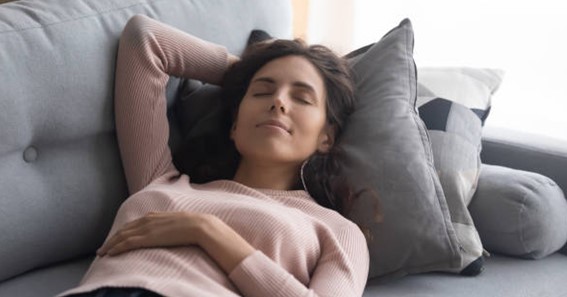What Is A Power Nap?
A power nap is a short sleep period that aims to reach the second phase of non-REM sleep. This type of sleep aims to recharge the body and avoid feeling groggy the next day. However, a power nap should never last for more than 30 minutes. If you plan to use it to improve your performance, here are some things to keep in mind. Read on to discover how to power nap!
You must know that naps are often considered mechanisms to manage stress. First, power napping should take place after a meal and between 12 and 2 pm. These times correspond to the normal biorhythm of the human body. People who work at home should take their power naps between 12 and 2 pm. Ideally, a 20-minute nap would be enough. If you’d prefer to sleep longer, try holding a lightweight object in your hand. Once your muscles relax, the object will fall out of your hand and signal the end of your power nap. A cup of green tea is another good option because it is a mild stimulant and will rouse you gently. It will also wake up your bladder.
When taking a power nap, make sure you’re in a dark room. Avoid distractions like bright lights and noise. A dark room will allow you to sleep more deeply and easily. Also, make sure you keep a blanket nearby and use a Do Not Disturb sign in your room. During the day, caffeine may be a good option as it increases productivity. It is important to have a backup plan in case you find that you can’t take a nap.
Click here – Quantitative Finance: The Basics
Adults And Napping
Studies on adults and napping indicate that napping is more prevalent among older adults with chronic health conditions. The associations between napping and health outcomes vary depending on the specific features of napping and the culture from which it comes. Studies have shown that napping is associated with higher weight gain, which could be explained by physical health or obstructive sleep apnea. But more research is needed to determine the role of napping in the aging process.
While naps are beneficial for a variety of reasons, they can lead to negative health effects if they are taken too long. Research suggests that adults are most likely to benefit from short naps, which can give them a boost in energy without affecting their ability to function during the day. A recent study by NASA indicated that a 40-minute nap could improve alertness in adults.
Sleep deprivation affects one-third of adult Americans, and it can be harmful to both your physical and mental health. Taking an afternoon nap will help you remember things you’ve learned during the day. It will also help prevent you from forgetting important skills, such as verbal recall. But when should you take advantage of a nap? If you’re still not sure, read on! This article will provide you with some tips to get the most out of your afternoon naps as well as some benefits of napping for adults.
Benefits Of Napping For Adults
Promotes Healthy Sleep
There are numerous benefits of napping for adults. Regular naps promote healthy sleep and prevent jet lag, which is linked to poor health. However, napping can be a negative experience depending on the circumstances. The age and duration of napping are two factors that can have a significant impact on the benefits and harms of naps. In this article, we’ll discuss some of the most important benefits of naps for adults.
Can Improve Mood And Reduce Stress
In addition to helping people recover from exhaustion, napping can improve your mood, reduce stress, and lower blood pressure. Even when taken in moderation, naps are beneficial for the overall health of both adults and teens. A regular nap can even help you fight off certain illnesses by boosting the immune system and reducing inflammation. Napping is healthy for adults, and it is recommended that you try it out at least two or three times a week.
Improved Productivity
One of the most common benefits of napping is improved productivity. If you’re working long hours or are pressed for time, a nap in the afternoon can help you achieve your goals. Napping can be planned, and you can do it in the car, on your desk, or even at home. You’ll be glad you took the time for yourself! The benefits of napping are many, but the most important is that you know how to use it right.
Better Memory Retention
Studies show that people who nap regularly have better memory retention than people who don’t. They also improve their physical stamina, reduce their stress levels, and reduce the chance of accidents. It also improves their mood. Taking a nap in the afternoon is beneficial for our brain. A midday nap has been shown to decrease impulsivity. In addition to boosting our memory, naps also help us to cope better with frustration and stress.
The Cons Of Napping For Adults
Unhealthy
One of the major cons of naps for adults is that they can be unhealthy. In addition to their negative effects, naps can also lead to metabolic syndrome and cardiovascular disease. If you’re planning to nap for a long time, it’s better to schedule it in between other activities. Napping for longer than an hour or two is associated with an increased risk of cardiovascular disease and type 2 diabetes. However, it’s still a good idea to take a nap if it’s convenient for you.
Can Increase The Amount Of Daytime Sleepiness
While the benefits of napping for adults are numerous, some drawbacks cannot be discounted. For one, naps may increase the chance of daytime sleepiness in some people. If you suffer from excessive daytime sleepiness, napping for an hour or more each day can lead to a higher risk of cardiovascular disease. However, if your daytime sleepiness is a result of a more serious problem, it may be best to consult a doctor.
Harmful For The Sleep Cycle
Long naps are harmful to your sleep cycle. Although 20 to 30 minutes is acceptable, it can make you feel groggy and prevent you from falling asleep at night. Depending on your age and body type, you may want to avoid naps after 3 p.m. The best time to nap is between noon and three p.m. Try to nap in a dark, cool area, away from light, and with a comfortable temperature. During a nap, it is important to give your body time to wake up before an activity that requires a sharp response.
Lastly
Experts recommend taking naps during the afternoon between two and three p.m. They recommend that naps last for at least 30 minutes, to maximise the benefit of the boost they give to your body and brain. Just make sure to nap in a dark place without interruptions. Taking a nap should never be longer than 90 minutes or you risk suffering from sleeplessness during the night.
Click here – Get Cash Loan Approval in a Few Minutes at SimplyCash



